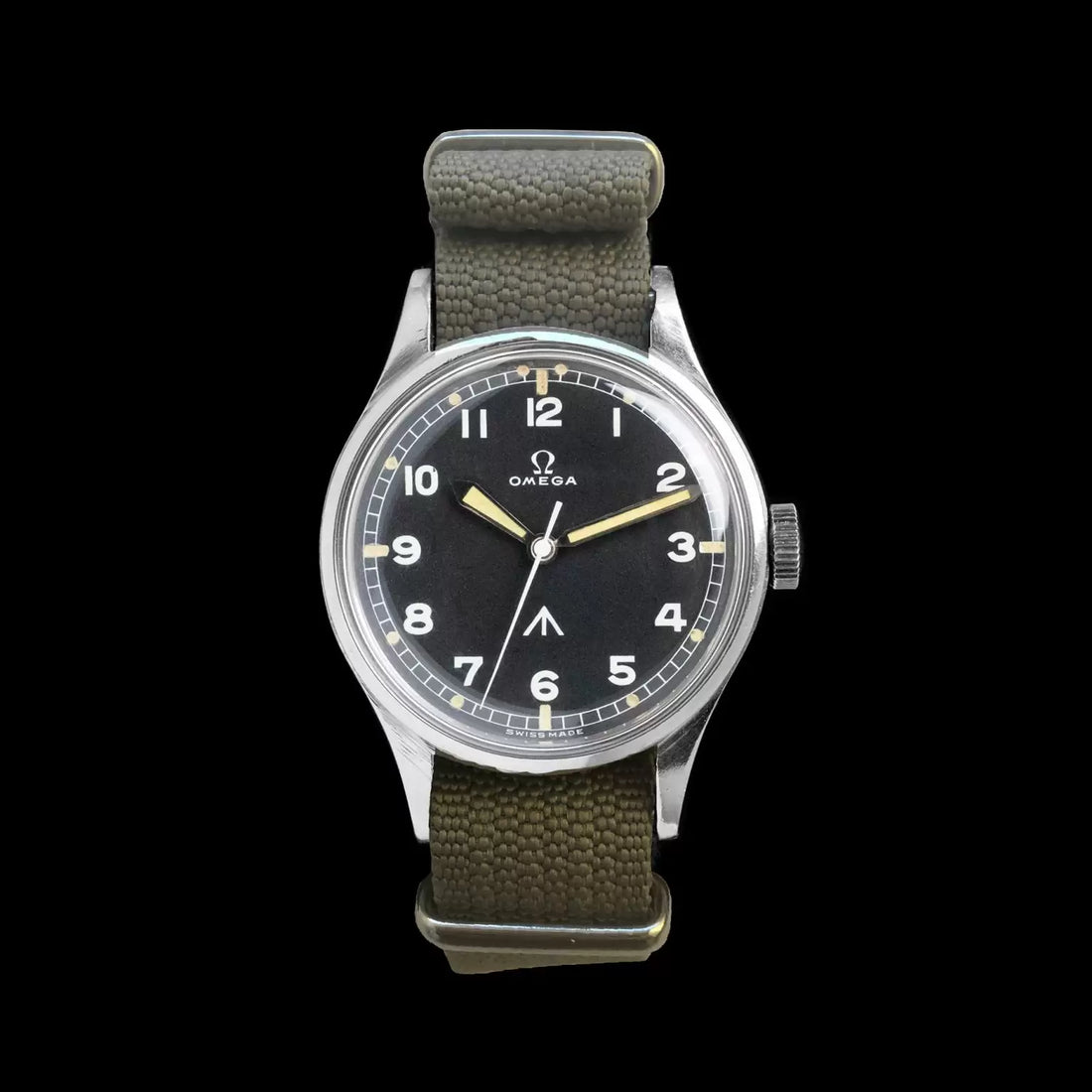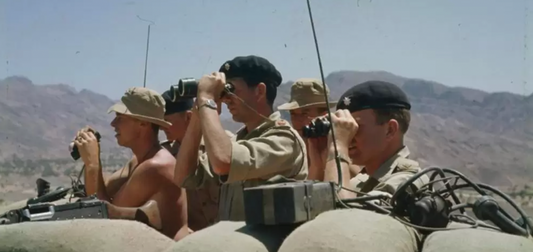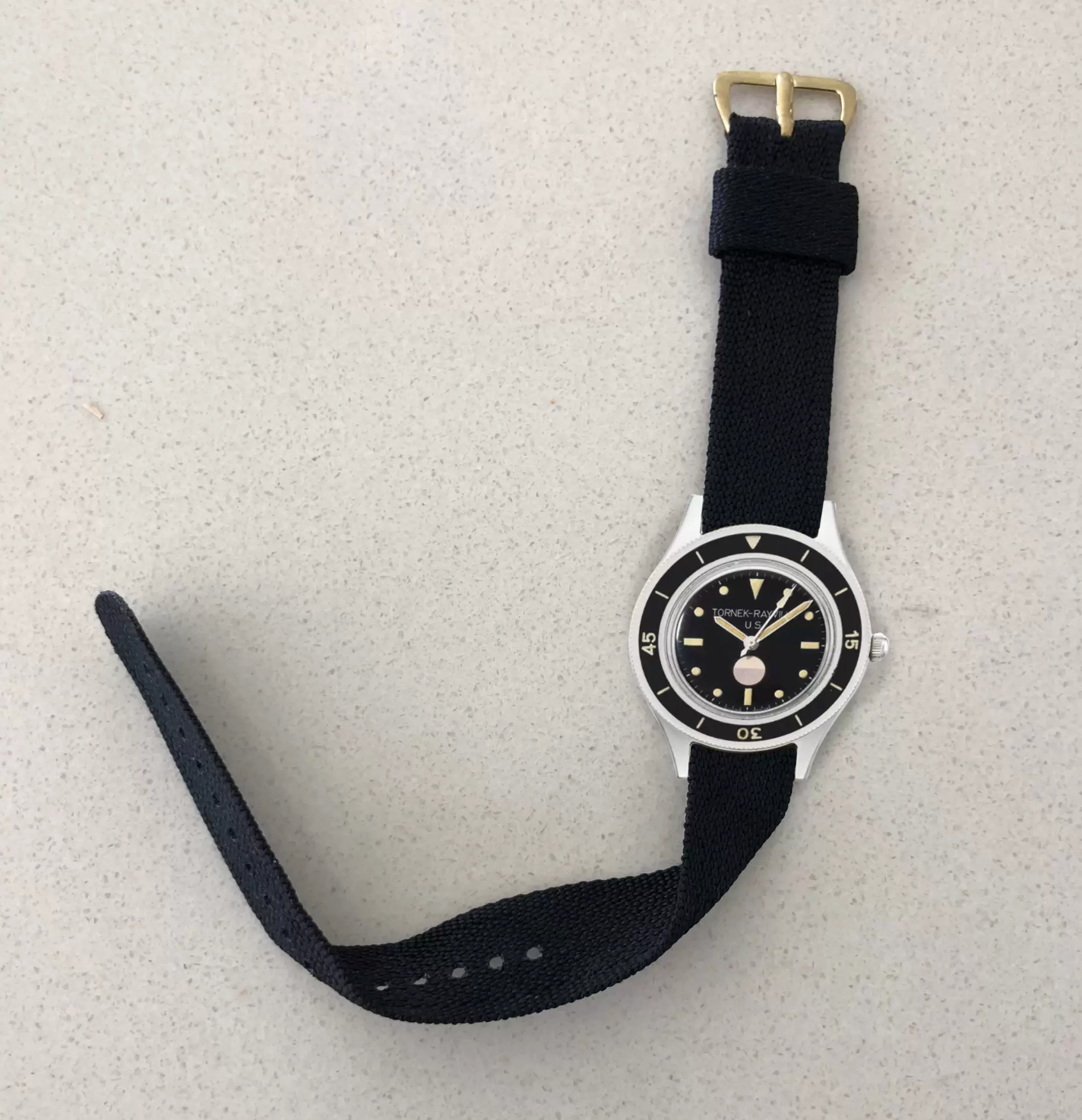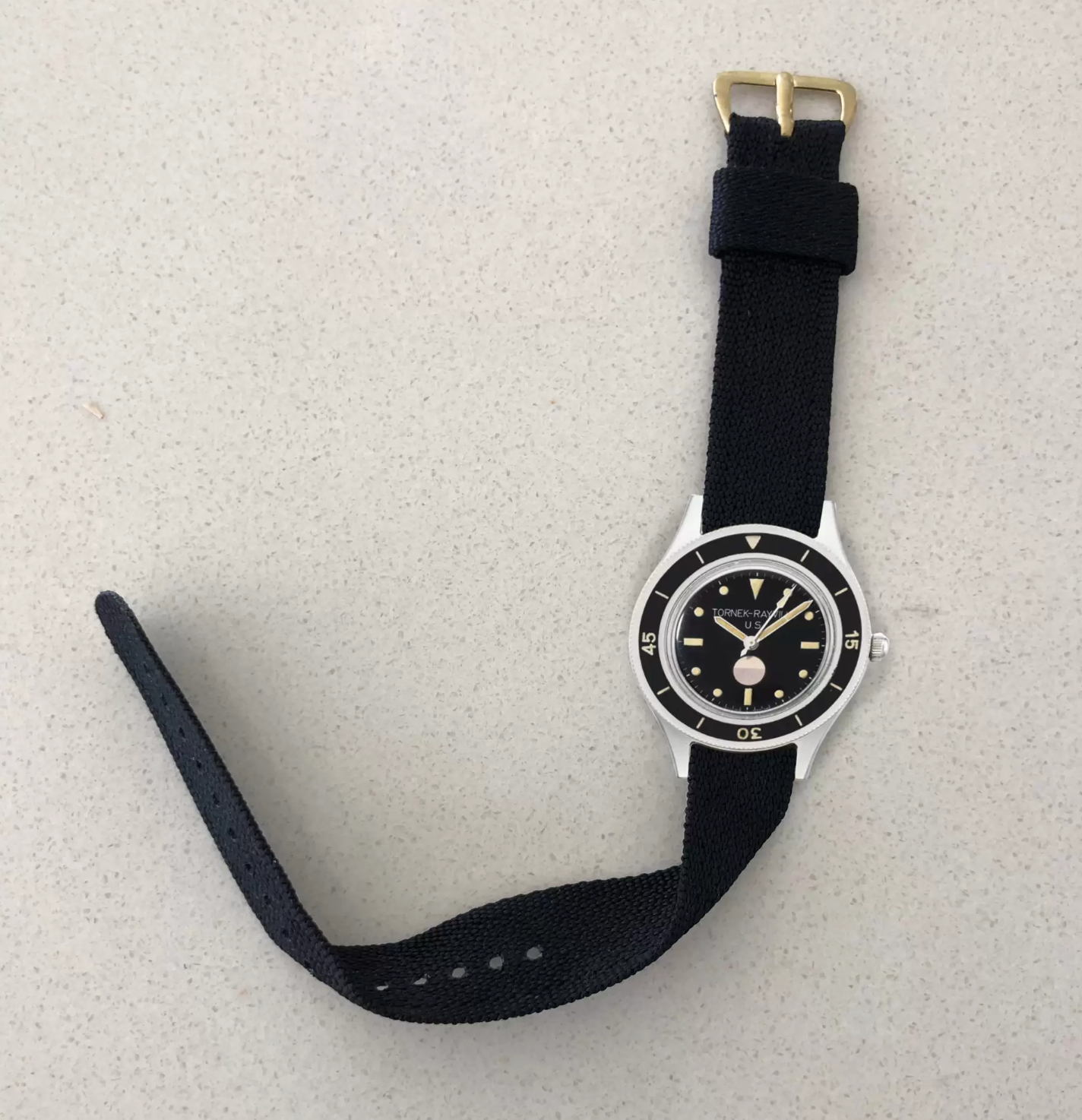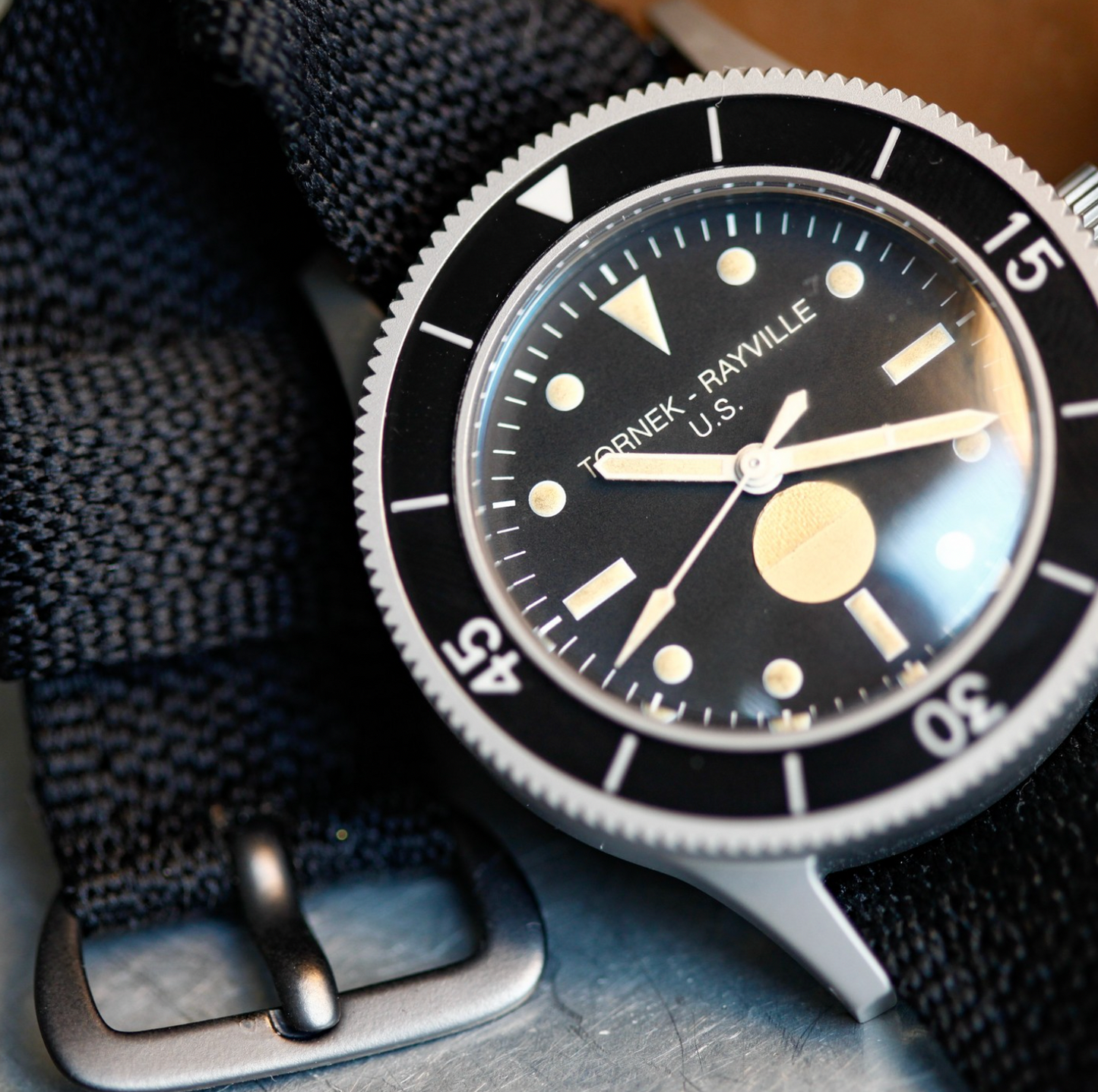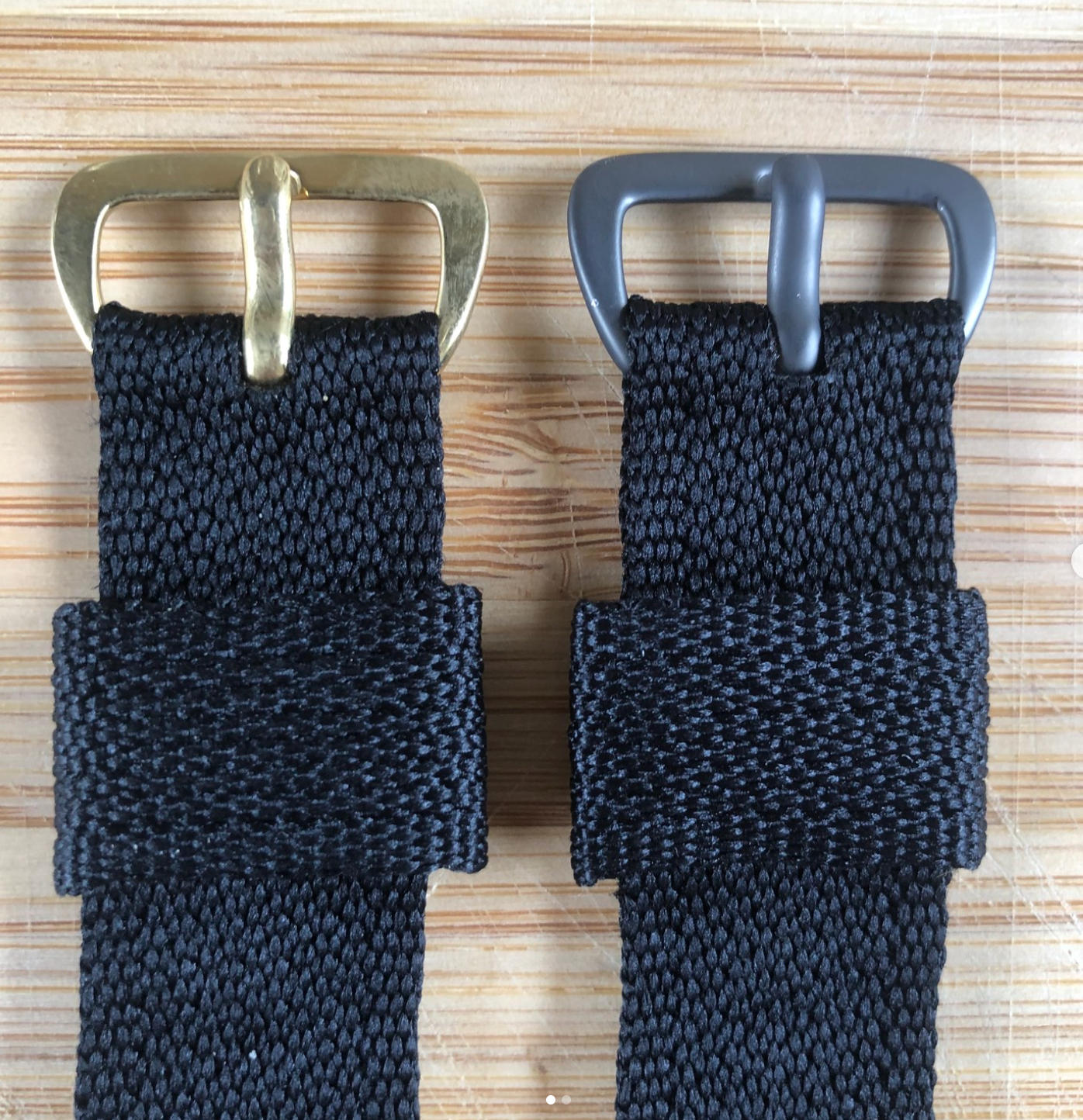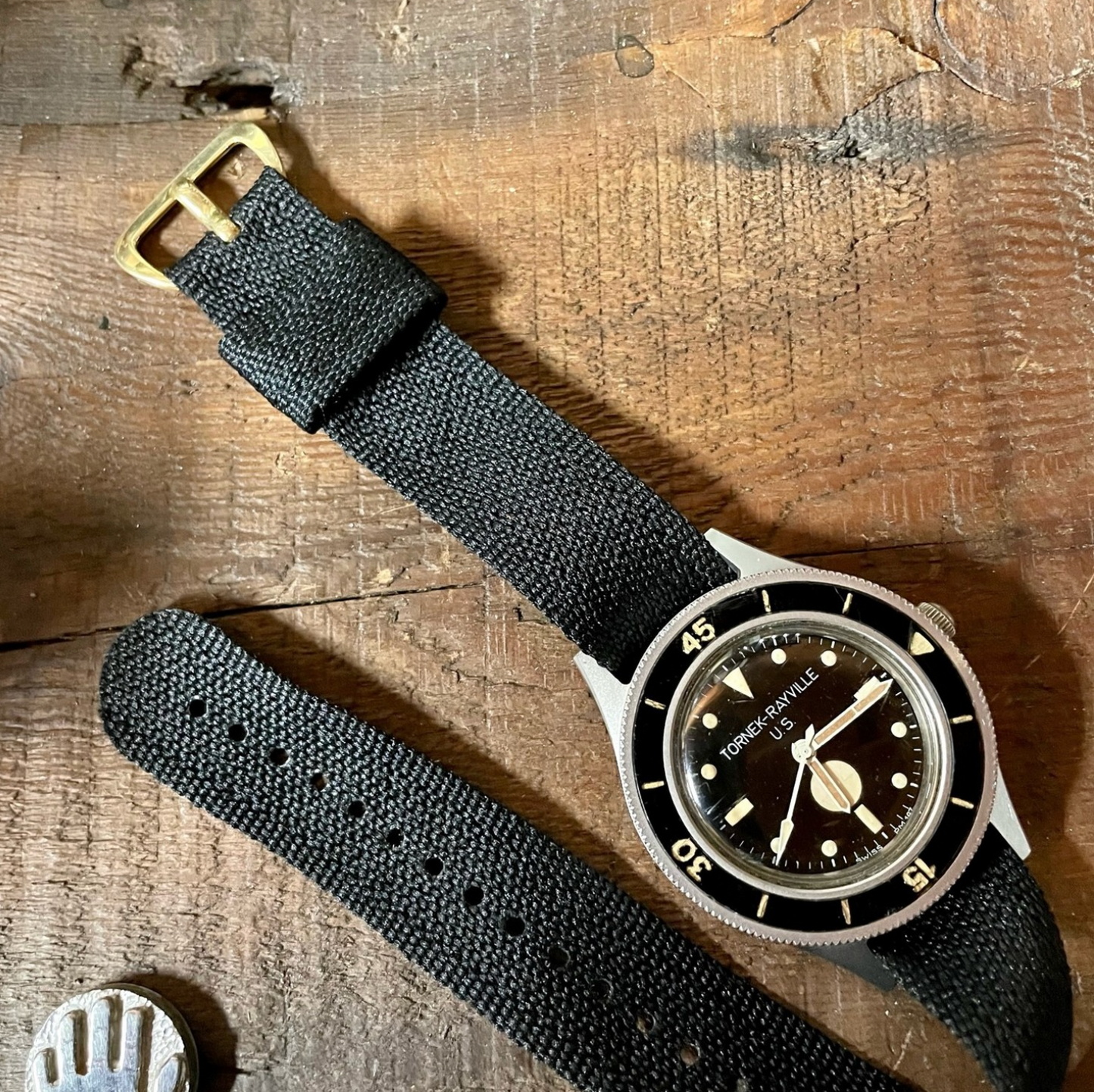This is the genealogy of the NATO strap.
A NATO strap is constructed from two pieces of strap material — a longer piece to wrap around the wrist, and another shorter piece that loops behind the watch case, and onto the longer piece, to prevent the case from falling off, or moving up and down the strap. The NATO strap can be fitted, or changed, without removing the spring bars of the watch from the case lugs.
The generic name NATO describing a watch strap derives from the late 1970s, and is a colloquial reference to the NATO Stock Number (NSN) for the 1973 issued military strap. It has evolved to mean any two part strap, not necessarily military issued. Earlier two part “NATO” straps existed before the slang term developed, as described below.
1908 : LEATHER
1908 saw the introduction of the first leather NATO strap.

The origin of the species was made by E.J.Pearson and Sons, the Victor strap from 1908, which was 205mm long and 9mm wide. E.J. Pearson and Sons had become the largest watch strap maker in England by the end of WW1. They registered design number 529337 with the British Board of Trade on 27 August 1908.

Some early wrist watches had fixed wire lugs, and shrapnel protectors for pocket watches also had lugs, so this fitted some watches until the 1920s. But, pocket watches were far more common until the late 1920s.
More details here.
1945 : CANVAS
1945 saw the first canvas NATO strap.

The VB Hygienique strap from 1945 was the next evolution. This was 16mm wide, and adjustable in length at the ladder buckle. It was available for private purchase at the end of WW2.

More details here.
1948-1953 : WEBBING
In the period 1948-1953 the first webbing NATO straps were modified from single pull through straps by military personnel, possibly at unit level.

Above is the 16mm wide A.F.0210. strap from 1945, modified prior to 1953 to stop the 6B/546 Omega from sliding off the single strap. The Omega had 18mm lugs.

Photo credit MWR forum member : nickb
The 6B/2594 strap listed as “Strap, Wrist, Watch, GS” in the Vocabulary of Royal Air Force Equipment is shown with a NATO modification above, probably dating to about 1952. This is also a 16mm wide strap.
1954 : NYLON
In 1954 the first nylon NATO strap was issued by the RAF, the 6B/2617. The Vocabulary of Royal Air Force Equipment also lists the 6B/2615 strap, which was a long webbing strap, issued with the 6B/2593 RAF survival compass in 1955.

The 6B/2617 strap, listed as “Strap (Nylon), Wrist Watch” in the Vocabulary of Royal Air Force Equipment was issued for use with the 6B/346 watch, 19 years before the next generation 1973 NATO strap. The strap was heat welded nylon, 16mm wide, with 8 longitudinal ribs, and is 270mm long.

1964 : JAMES BOND DID NOT WEAR A NATO STRAP

1973 : NYLON 20MM

- Material: straight cross-weave nylon ribbon free from additives that could irritate the wrist under humid or extreme conditions.
- Colour: BS 4800 card number 3, reference 18B25, colour grey. (‘Admiralty grey’).
- Length: 280 mm.
- Width: 20 mm (± 0.5).
- Thickness: 1.2 mm.
- Welded joints and sealed strap end.
- Loops at 12 mm, 37 mm and 87 mm from the buckle end.
- Buckle, prong and keepers of chromium plated brass.
- Recessed buckle to secure prong.

WHAT IS A G10 STRAP?
Some refer to the NATO strap as a G10 strap, based on the Army procedure necessary to obtain one from the unit quarter master.
The Army Form General 1033 (G1033) was used by an individual soldier to sign for military equipment, and to obtain an 6645-99-124-2986 from stores a G1033 needed to be filled in. The stores for a mobilised unit were in turn listed on an Army Form General 1098. Army Form General 1098 (G1098) is a regular units equipment establishment table and details all the equipment the unit should hold to equip its officers and soldiers; it includes webbing, shovels, weapons etc.

It has been said that the only thing a good Army store man should have on his shelves are batches of G1033s, as it makes it so much easier at stock check times.
Like the term NATO, the strap was also colloquially called a G10.
